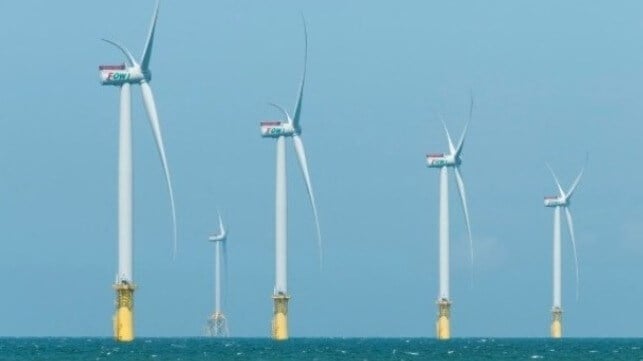Mitsubishi Takes $340M Impairment on its Offshore Wind Portfolio

In its latest quarterly report, Japanese industrial conglomerate Mitsubishi revealed that it is taking a $340 million hit in connection with the reduced prospects of its domestic offshore wind portfolio, which it has placed under review.
Mitsubishi Corporation has announced plans to restructure its offshore wind portfolio in Japan, citing disruptions in the macroeconomic environment. It will be reviewing the future of three projects, including the 480 MW Noshiro Mitane Oga project off Akita Prefecture, 820 MW Yurihonjo City Offshore wind farm off Akita Prefecture and the 400 MW Choshi City project off the coast of Chiba Prefecture.
Mitsubishi was selected the operator of these projects in December 2021, when Japan completed its first fixed-bottom wind auction.
“In the wake of the pandemic and the Ukraine crisis, the business environment for offshore wind power has significantly changed and is continuing to change worldwide due to factors such as inflation, the depreciation of the yen, tight supply chains and rising interest rates. We will consider the appropriate next steps after thoroughly examining the results of our review,” said Mitsubishi.
Across major markets, investments in offshore wind continue to face economic pressure, especially in Europe and the U.S. In Japan, there is also a noticeably bearish market sentiment on the profitability of offshore wind projects. In the third wind auction concluded in December, at least 15 companies in the sector, including Mitsubishi Corp. and Cosmo Energy Holdings, did not participate, according to Nikkei. This is despite some of these companies having conducted environmental assessments in readiness for the auction.
Japan heavily relies on energy imports for its electricity needs and is targeting offshore wind as a stable supply that can be tapped locally. The country’s goal is to install 10 GW by 2030 and 45 GW by 2040.
Meanwhile, the Japanese government has signaled raising the local content goal for offshore wind farms to 70 percent from the current 60 percent. Reportedly, the expert panel reviewing the local content rules begins meeting this month and is expected to finalize its findings by summer. Some of the issues to be deliberated include the necessary degree of government support to the wind sector.
The tightening of the local content rules is meant to reduce reliance on foreign companies, especially in the manufacturing of wind farm core components. Currently, Japan relies on imports of these components from western companies such as Siemens Gamesa and Vestas. Japanese firms are mainly concentrated in offering services like the installation and operation of offshore wind farms.
